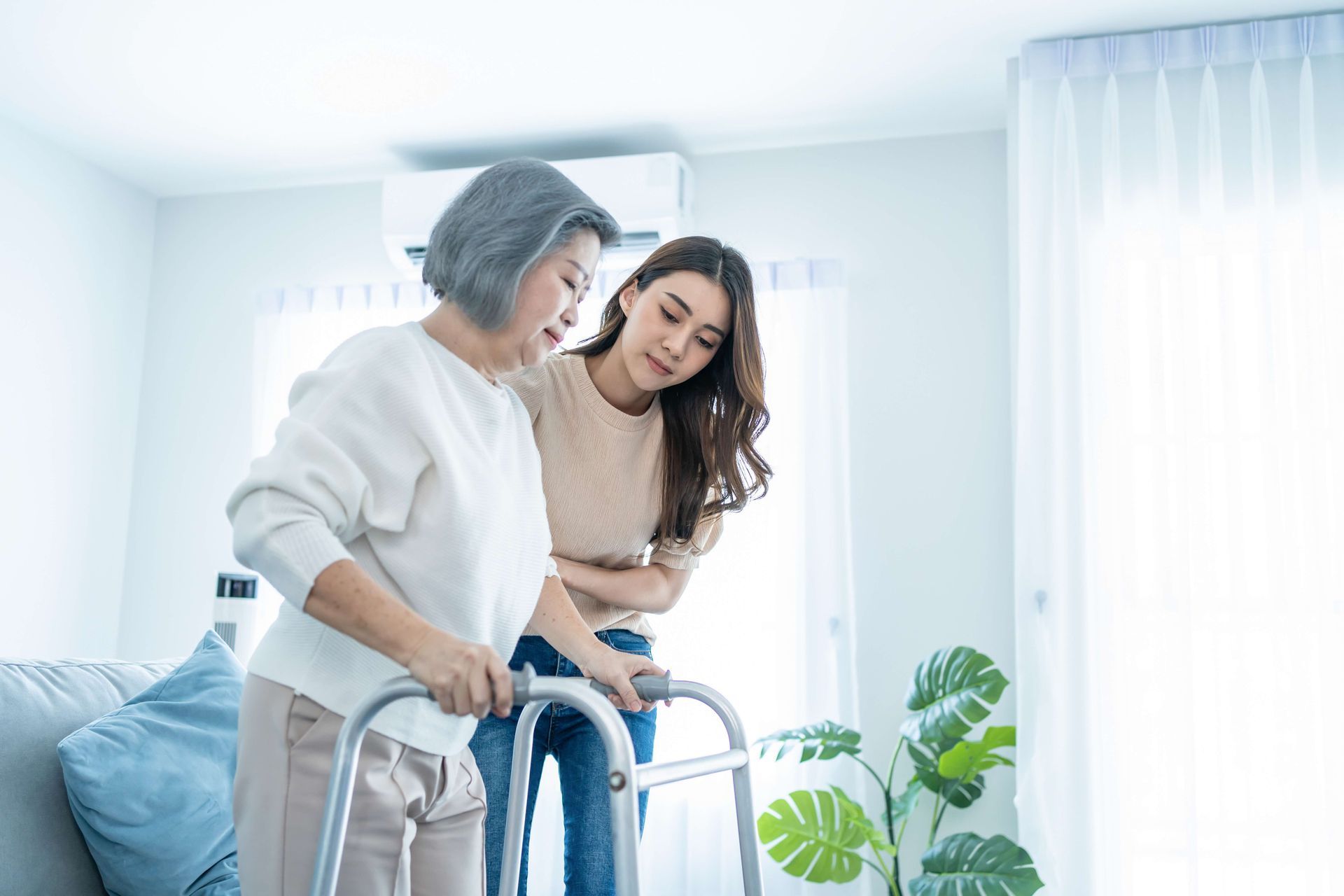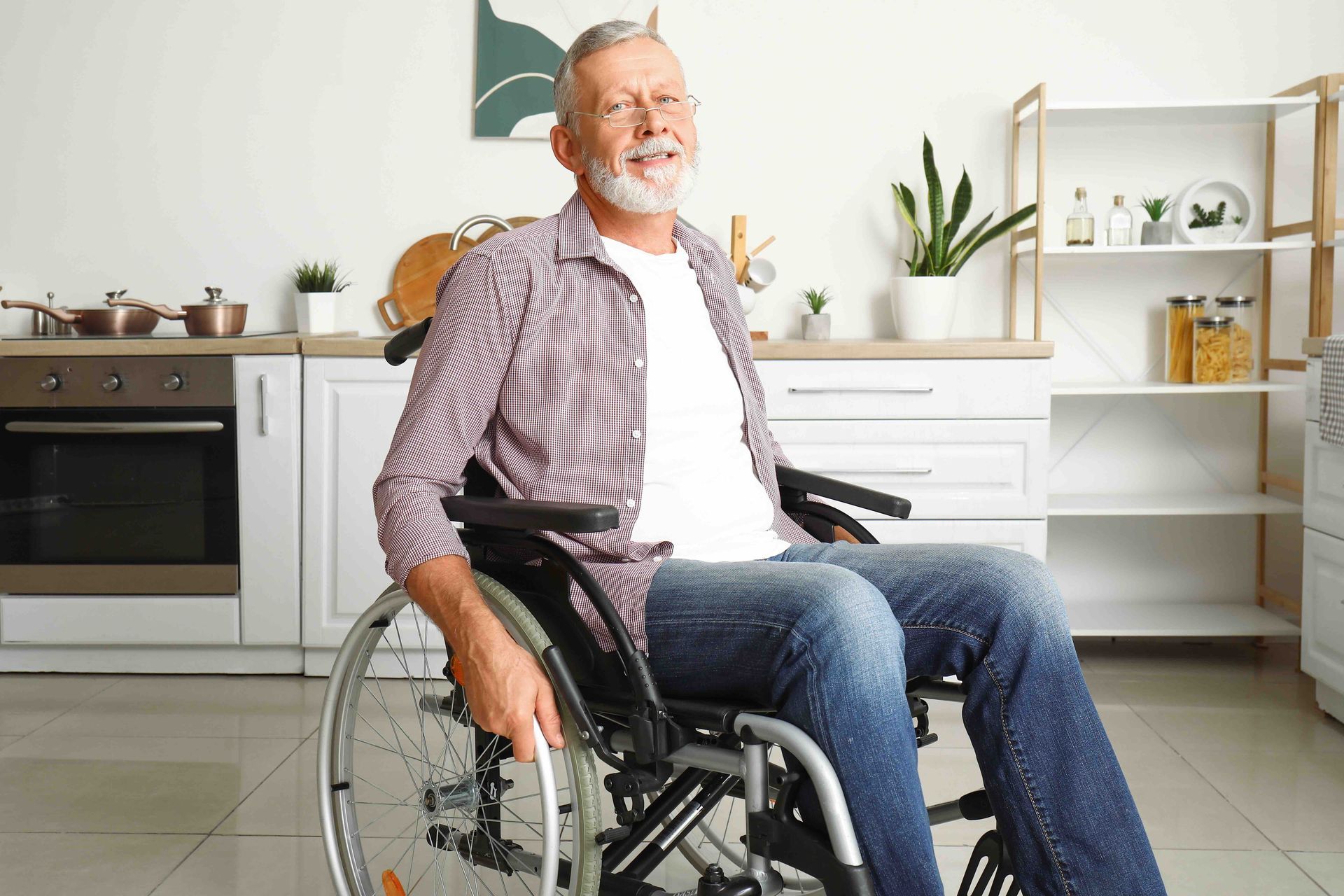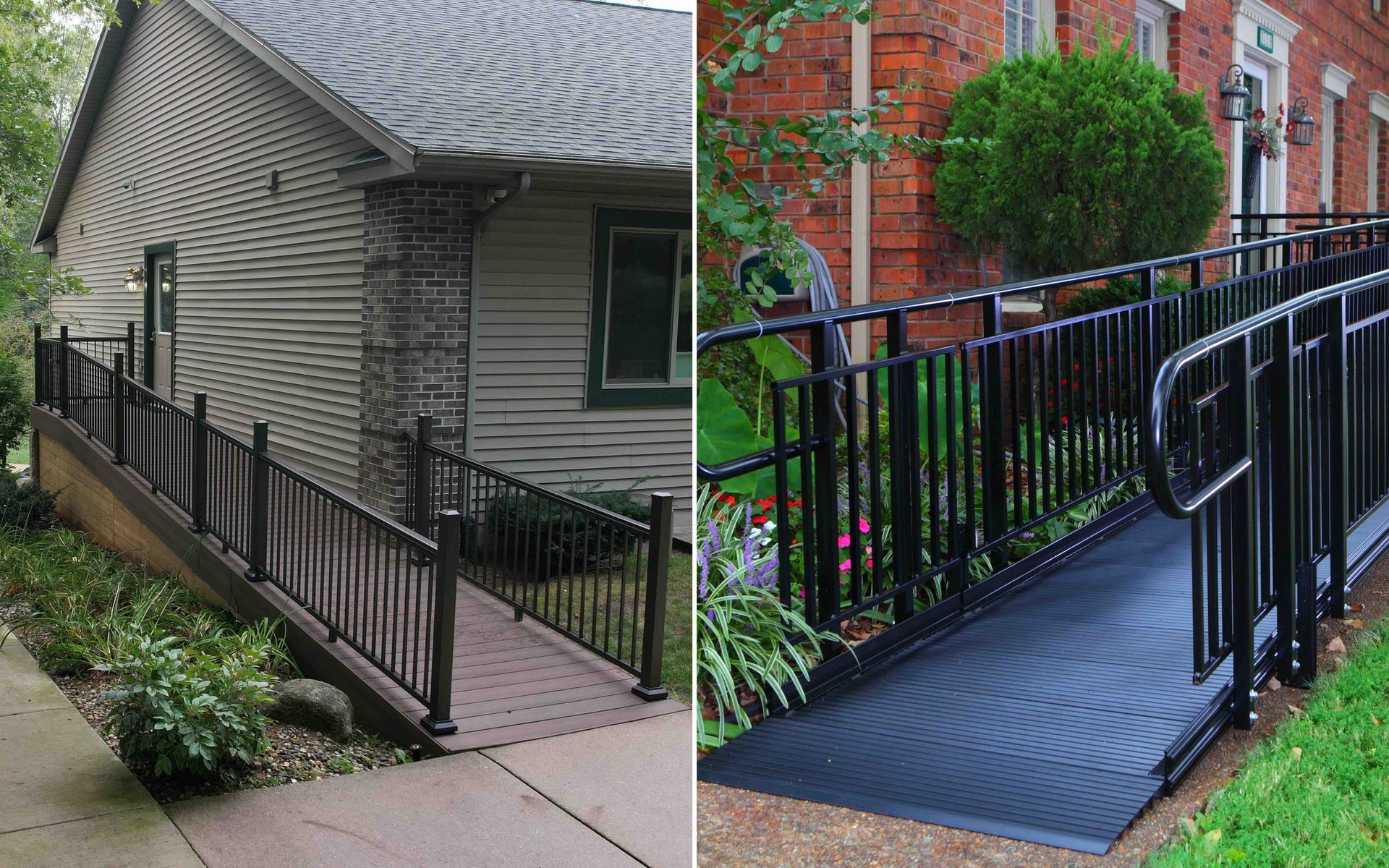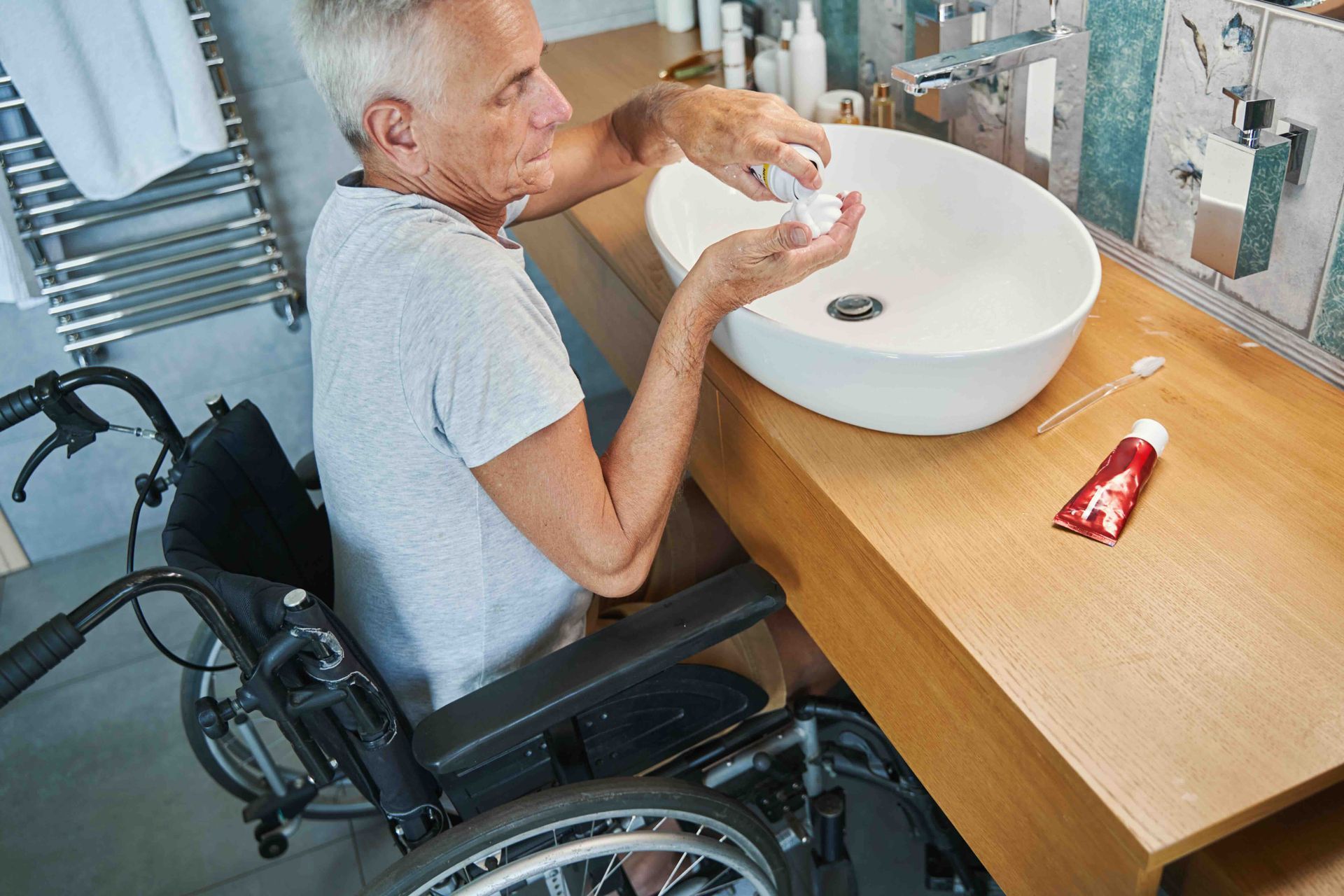The desire to age gracefully in the comfort of familiar surroundings is a powerful one. Studies show a significant 77% of Americans over 50 prioritize aging in place, remaining in their cherished homes rather than relocating to unfamiliar environments. Veterans, too, often find security and peace of mind in the comfort of their own spaces. But how can this dream become a reality when everyday obstacles like stairs, high cabinets, and narrow doorways threaten independence and safety?
The answer lies in strategic home modifications. These targeted adjustments are more than just improvements; they are transformations that empower older adults and veterans to continue living fulfilling lives within their own walls. Imagine a world where navigating the home becomes effortless, where daily tasks can be completed with confidence, and where independence remains a cherished part of life. Home modifications based on Universal Design principles make this vision a reality.
Universal Design goes beyond basic accessibility, focusing on creating an environment that is comfortable, functional, and safe for everyone, regardless of age or ability. Think of it as designing a home that works for you today and tomorrow. By incorporating these thoughtful modifications, you can transform your home into a haven that fosters independence and allows you to age with dignity in the place you love the most. You can also read our veteran's resources here.
What are Home Modifications for Veterans Aging in Place?
Many veterans, just like a significant portion of the population over 50, cherish the idea of aging in place—remaining in the comfort and familiarity of their cherished homes. However, the realities of aging can present challenges, with everyday tasks becoming more difficult due to reduced strength, balance issues, or loss of muscle mass. Thankfully, strategic home modifications can transform a veteran's home into a safe and inviting haven, fostering independence and dignity well into their golden years.
Wheelchair Ramps
One of the most impactful modifications for veterans is the installation of a wheelchair ramp. A wheelchair ramp can be permanent or temporary. Wheelchair ramps eliminate the significant obstacle posed by steep steps, allowing veterans with limited mobility to navigate their homes confidently. It's important to remember that wheelchair ramps aren't just for those using wheelchairs; they provide a safer and more accessible alternative for anyone carrying groceries, pushing strollers, or recovering from an injury.
Wheelchair ramps come in various forms, offering flexibility based on individual needs.
Permanent ramps, typically constructed from aluminum, concrete, or wood, are securely fastened in place for long-term use. Alternatively, temporary ramps offer a more portable solution. These ramps rest on existing surfaces, like concrete pads or ground level and can be easily removed or stored when not required.
For temporary ramps, consider factors like folding ease, storage space needed, and weight capacity. Portable ramps, like the Roll-A-Ramp, exemplify a convenient option. These lightweight aluminum ramps fold compactly for easy storage and transportation, making them ideal for both indoor and outdoor use.
These are just the first steps in creating an age-friendly home. In the following sections, we will explore additional modifications that enhance safety, accessibility, and overall comfort for veterans as they age in place.
Installing Handrails
One of the most impactful modifications involves the installation of strategically placed handrails. These act as a steady companion, providing essential support when navigating stairs or simply walking from one room to another. This is particularly beneficial for veterans who may have balance difficulties or a diminished sense of confidence in their ability to move around without falling.
While stairwells are a common location for handrails, their benefits extend far beyond. Installing handrails in hallways, along kitchen counters, and next to each exit creates a network of support throughout the home. This allows veterans to move around with greater confidence and reduces the risk of falls, a significant concern for older adults.
Having Appropriate Flooring
Older homes can harbor hidden dangers for aging veterans. Cracked tiles, worn carpeting with curled edges, or uneven surfaces all pose potential fall hazards. To minimize these risks, consider installing low-impact flooring. This type of flooring absorbs more energy than standard materials, cushioning falls and potentially preventing serious injuries. Rubber and cork flooring are excellent choices due to their soft, slip-resistant properties.
Existing carpeting can also be made safer by adding non-skid backing. This simple and cost-effective solution provides much-needed traction and reduces the likelihood of slipping. New, low-impact flooring can make a big difference in any area of the home, from high-traffic areas like the kitchen to the basement, creating a safer environment for everyday activities.
Installing Patient Lifts and Stairlifts
For veterans with limited mobility, navigating stairs can become a significant obstacle. This can restrict access to certain areas of the home, leading to feelings of isolation and a loss of independence.
The installation of a stairlift or patient lift offers a transformative solution. These ingenious devices act as a motorized chair that glides along a track, allowing veterans to easily and safely access the upper floors of their homes without the need to climb stairs.
Stairlifts can be installed between the basement and the first floor or the first floor and the second floor, depending on individual needs.
This innovative technology not only reduces the risk of falls on stairs but also empowers veterans with a sense of independence, allowing them to access all areas of their homes with ease. The ability to navigate their home freely fosters a sense of control and dignity, allowing veterans to continue living comfortably and safely in their cherished spaces.
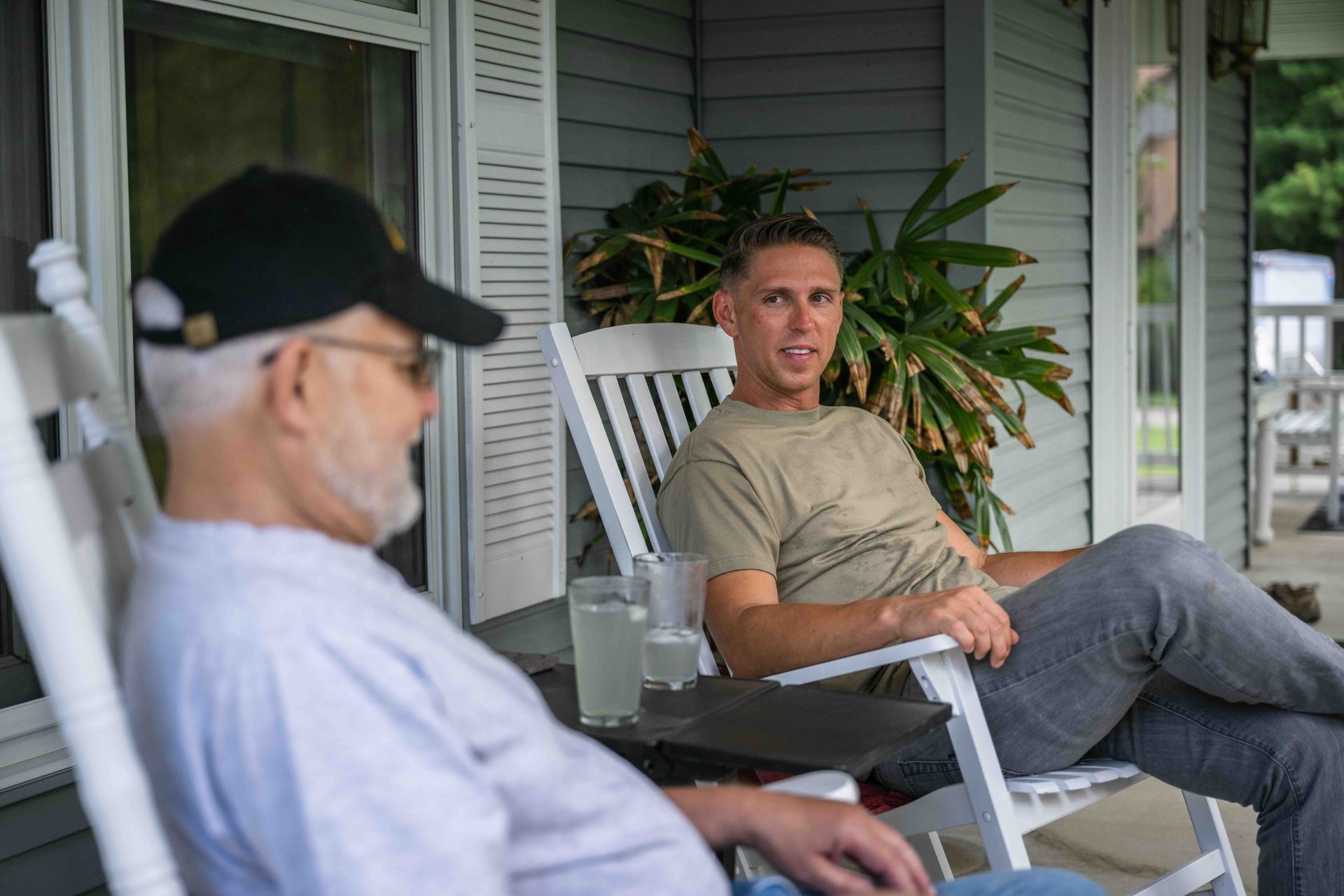
How Home Modifications Empower Caregivers of Disabled or Aging Veterans
For caregivers of disabled or aging veterans, maintaining their loved one's independence while ensuring their safety can be a constant challenge. The desire to age in place, to remain in the comfort and familiarity of their own homes, is a sentiment shared by many veterans.
However, age-related limitations or disabilities can create obstacles within the home environment. Fortunately, strategic home modifications can bridge this gap, empowering veterans to maintain independence while simultaneously providing immense relief and support for their caregivers.
Reduced Fall Risk
One of the most significant benefits of home modifications for caregivers is the reduced risk of falls. Bathrooms, with their slippery surfaces and awkward maneuvering, are a high-risk area.
Installing grab bars, shower seats, and non-slip flooring significantly reduces the risk of falls, offering caregivers immense peace of mind. The knowledge that their loved one can navigate the bathroom safely allows caregivers to relax and focus on other aspects of care. This translates to a reduction in stress and anxiety, creating a more positive and supportive caregiving environment.
Increased Independence
Home modifications empower veterans to maintain their independence by mitigating everyday obstacles. Ramps eliminate the need for assistance navigating stairs, grab bars provide support in bathrooms, and wider doorways allow for easier maneuvering with walkers or wheelchairs. These adjustments allow veterans to complete daily tasks with greater autonomy, reducing their reliance on caregivers for basic needs. This fosters a sense of dignity and control for the veteran, while simultaneously freeing up the caregiver's time and energy.
Reduced Need for Intervention
Certain modifications, like installing stovetop guards or automatic shut-off features on appliances, can prevent accidents in the kitchen. Lower cabinet shelves and pull-out drawers allow veterans to access items independently, reducing the risk of reaching for objects and potentially falling. These proactive safety measures not only protect veterans but also minimize the need for caregivers to constantly intervene or monitor their activities. This fosters a sense of trust and allows caregivers to focus on providing assistance where it's truly needed.
Reduced Future Costs
While the initial investment in home modifications might seem substantial, the long-term benefits are undeniable. Reduced fall risks and improved safety minimize the need for emergency medical interventions or hospitalizations. Additionally, maintaining independence in the home can potentially delay the need for assisted living facilities or nursing homes, resulting in significant cost savings down the road. Furthermore, home modifications create a universally accessible environment, future-proofing the home for potential changes in the veteran's needs.
Giving Back Control and Dignity
The benefits of home modifications extend beyond physical safety and independence. The ability to navigate their own home freely fosters a sense of control and dignity for veterans, leading to increased self-esteem and overall well-being. This, in turn, can improve communication and reduce frustration for both the veteran and the caregiver. Caregiving can be emotionally demanding, and witnessing a loved one's struggles can be disheartening. Home modifications that empower veterans can contribute to a more positive and supportive emotional environment for both parties.
Shared Decision-Making
The process of selecting and implementing home modifications can be an excellent opportunity for shared decision-making between the veteran and their caregiver. Working together to create a safe and accessible environment fosters a sense of collaboration and empowers the veteran to feel involved in their own care.
Additionally, involving occupational therapists or other healthcare professionals in the planning process can provide valuable expertise and ensure that the chosen modifications align with the veteran's specific needs and limitations. This collaborative approach creates a supportive team environment, fostering a sense of security and well-being for both the veteran and the caregiver.
Investing in a Shared Future
Home modifications are an investment in a shared future, allowing disabled or aging veterans to continue living comfortably and safely in their homes. The benefits extend far beyond the veteran, providing immense support and relief for their caregivers. By reducing fall risks, enhancing independence, and fostering a positive caregiving environment, home modifications empower both veterans and their caregivers, creating a more dignified and fulfilling experience for all involved.
Are you interested in home modifications for a veteran’s home? Contact Lakeshore Barrier-Free today for a consultation and let us give your veteran a warm, welcoming, and safe place at home for the best experience of aging in place yet.
TALK TO THE EXPERTS OF LAKESHORE BARRIER FREE TODAY!
We believe that everyone should have access to every area of their home! We work directly with you to make sure that every grab bar, bathroom sink, kitchen countertop, patient lift, and more is at the perfect location for you and your loved ones. Call us at
(616) 477-2685 or email us at
Info@LakeshoreBarrierFree.com
Share this blog


